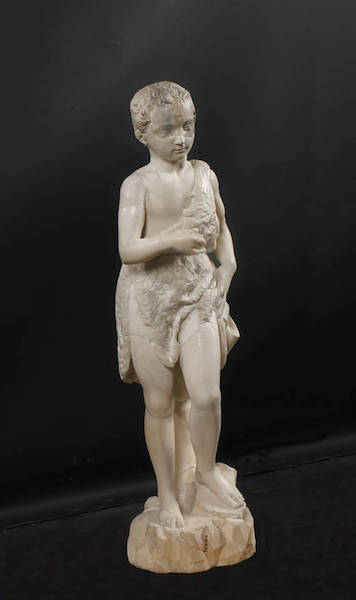
Photo via: Museo del Prado
After 19 years of restoration work, Michelangelo’s Young Saint John the Baptist (1495-96) has gone on display today at the Museo del Prado.
The sculpture, Spain’s only Michelangelo, was destroyed during the Civil War (1936-39) at the Chapel of the Savior of Úbeda, in Andalusia, where it was first put on display back in the 16th century.
The sculpture was not only hammered to pieces, but its head was also burnt. According to El País, the damage was most likely caused by the anarchist faction.
A full restoration was unthinkable until fairly recently, but the owner, the Ducal House of Medinaceli Foundation, stored the pieces for decades until state of the art technology made it possible.
In 1996, the pieces were sent to the Opificio delle Pietre Dure in Florence, where a team of experts worked painstakingly to restore the artwork to its full glory, albeit with visible scars, which have been kept as a reminder of war and destruction.
The team used vintage photographs of the piece for reference. They also researched written descriptions, like the one penned by Giorgio Vasari, where he compares Young Saint John the Baptist with other early works by Michelangelo, such as the Bacchus sculpture (1496-97) and The Manchester Madonna painting (1497).
These sources allowed the team to create a 3D virtual reconstruction of the sculpture. They then assembled the remains of the piece, secured with the help of a steel structure, and filled the gaps with a blend of fiberglass and nylon.
The filling was then sealed with stucco, wax, and varnish and the burnt head given a laser treatment, which cleaned and smoothed its surface.
Young Saint John the Baptist will be on display at Museo del Prado in Madrid until June 28. It will then return to its original location at the Chapel of the Savior of Úbeda.